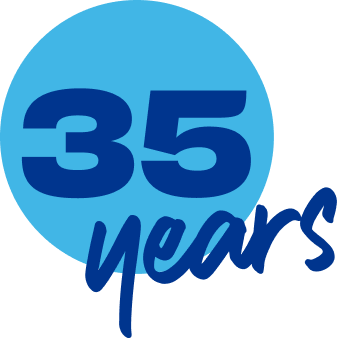
A heartbeat away from home
A cardiac event abroad led Dr. Henry Solow back to the hospital he helped shape.
The top of a six-storey waterslide at a resort in a foreign country is an especially terrifying place to experience cardiac arrest. That’s where Dr. Henry Solow, a 35-year veteran haematologist-oncologist at MSH, was when his heart stopped in January 2025. Thankfully for Dr. Solow, his son was just ahead of him on the platform.
The Greater Toronto Area–based physician, heard his father collapse and immediately sprang into action. He performed CPR and then used the resort’s automated external defibrillator to bring his father back to life, before brain damage could occur.
The doctor becomes the patient
Dr. Solow was rushed to a nearby hospital in Nassau, Bahamas, where medical staff confirmed he was no longer in immediate danger. An echocardiogram revealed the likely reason his heart stopped: severe aortic stenosis due to an undiagnosed heart condition called bicuspid aortic valve disease. However, the local hospital wasn’t equipped to perform further tests and recommended he return to Canada. He and his family knew exactly where he needed to be.
“Going to a downtown hospital didn’t even enter my mind, because MSH is my home,” Dr. Solow explains. “I spent 35 years working there, and it’s really like family — it’s a community. I knew they would look after me.”
Oak Valley Health established a cardiac care partnership with Unity Health Toronto in 2024 that gives patients access to advanced cardiac procedures, with streamlined care and communication between hospitals. In addition, MSH opened its new Cardiac Device Clinic in spring 2025, to service patients with implanted pacemakers. With a 32 per cent increase in cardiac patients since 2019, these are a few of the many ways MSH is stepping up to provide better cardiac care as the community grows.
Dr. Solow arrived at MSH by air ambulance at 2 a.m. the following morning, where he was admitted to the Cardiology Unit.
Born that way
The aortic valve usually has three leaflets that close after the heart pumps blood into the aorta. In Dr. Solow’s case, he was born with only two, which can lead to a narrowing of the valve (stenosis) and cause the heart to work harder.
Valvular heart disease, which is the umbrella term for Dr. Solow’s condition, affects approximately 2.5 per cent of Canadians. While symptoms may be non-existent when the disease is mild, if aortic stenosis develops and remains undiagnosed and untreated, it can lead to stroke, heart failure, blood clots or, as Dr. Solow experienced, cardiac arrest.
Attending cardiologist Dr. Russell Fernandes performed tests on Dr. Solow to ensure he was stable and to confirm the diagnosis. “With this cardiac condition, you have to be very careful with how you administer treatment, because there can be complications if you’re too aggressive,” Dr. Fernandes notes.
Continuity of care
As part of the cardiac partnership with Unity Health Toronto, Dr. Solow was transported to St. Michael’s Hospital in downtown Toronto for an angiogram, and a stent was inserted in one of his arteries to improve blood flow. A week later, he underwent a transcatheter aortic valve implantation (TAVI), where a replacement valve was inserted through a catheter and implanted inside his existing aortic valve to repair it.
One of the many benefits of this partnership is the seamless integration of patient health information, no matter where they are.
Dr. Solow continued his recovery from the TAVI at MSH, was released after three days, and returned to work one month later.
“Going from doctor to patient to doctor was nothing,” Dr. Solow insists. “I was just touched, because half the hospital came to see me: doctors, nurses from my clinic and other wards, lab staff. It was nothing short of exceptional.”

